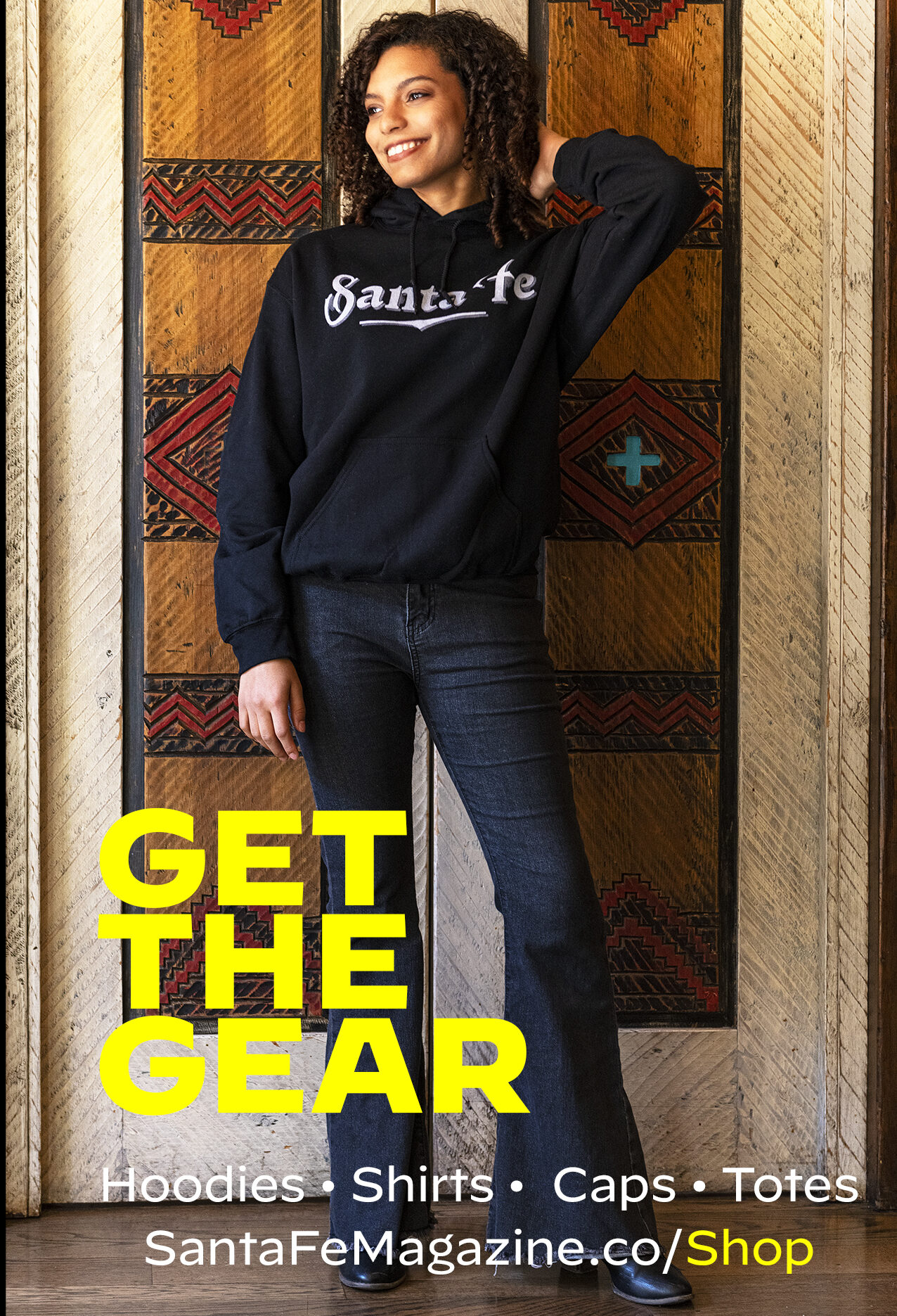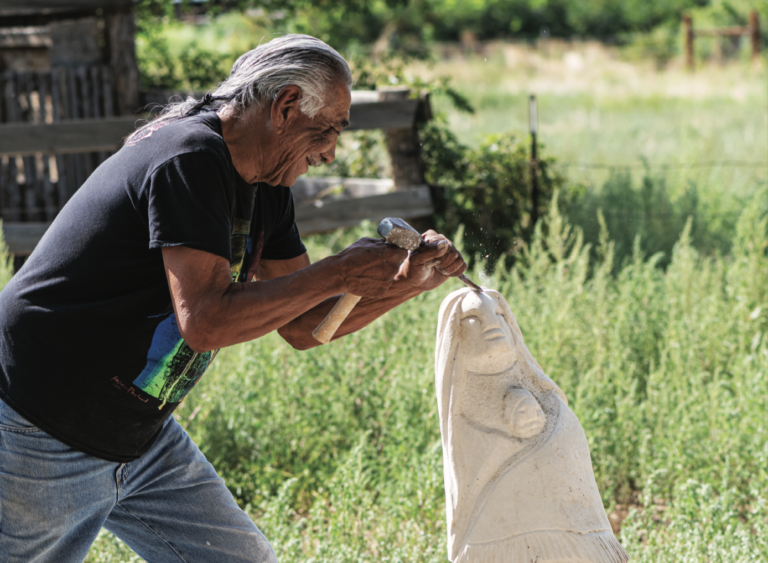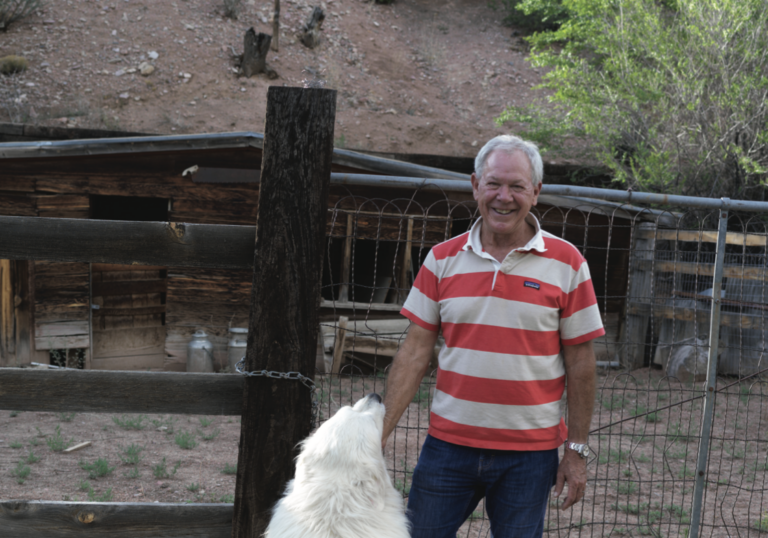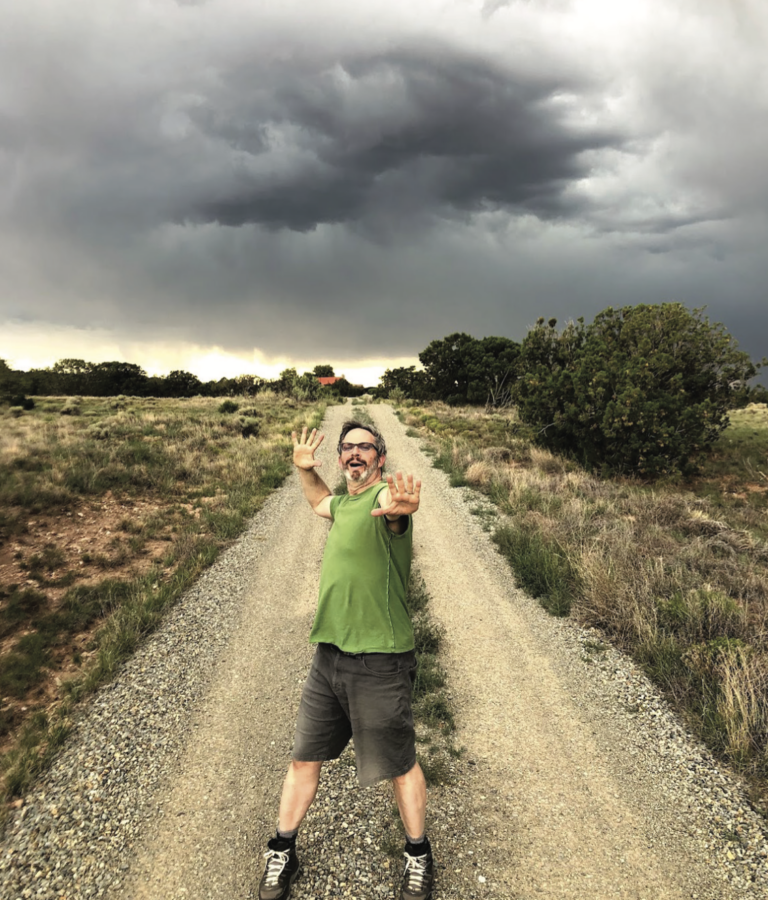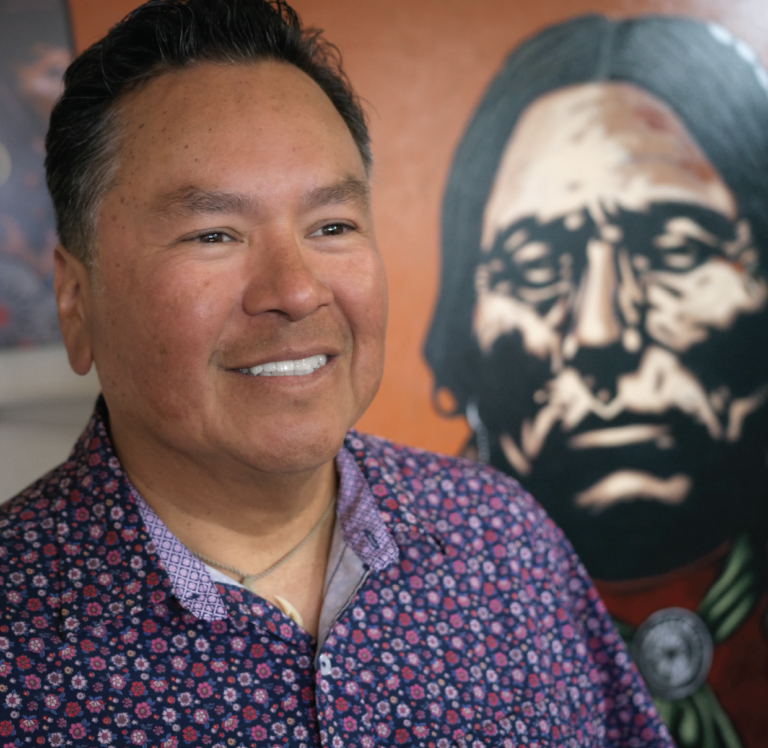SHE DESIGNED THE FOUNTAINS AT THE BELLAGIO. But it wasn’t really her favorite. Just a big, splashy thing, she calls it. Instead, she prefers color, texture, and shapes inspired by nature, that “integrate seamlessly” into the world around us. So whether she’s designing architectural treatments, graphics, water sculptures, or beadwork, for her, it’s all about pattern. Her current beadwork – design crochet – takes form as bracelets and necklaces and is “finished” by the wearer. Only then is the design complete. We visited her home and studio in a small village north of Santa Fe to talk about art, design, pattern, beauty, and spirit. Oh, and Steve Wynn.
You started out at an architectural firm?
Out of school, I went to work immediately. I didn’t get a master’s – I went straight to work for Skidmore, Owings, and Merrill doing graphic design and interior and exterior treatments. It was basically a master’s.
I learned a ton from Chuck Basset, who was a mentor to me, along with Charles Pfister. They were significant designers doing amazing things.
Most importantly, I learned how to take design and fit it into the commercial world. But after a while, Chuck retired, Charles left, and SOM really changed. I left.
Then I met a man who had been a student of my father’s, and he hired me to design the branding for his new company that used new technology to create water sculptures. He was doing things that blew my mind. It was a very strange turn in my career, but an amazing one. Soon I was designing fountains; my first one was the Los Angeles Music Center.
We designed water with architects and with landscape architects. Our objective was to obliterate the boundaries between hardscape and waterscape.
But then Steve Wynn came along. And we had the opportunity to do the biggest fountain in the world — the Bellagio. Other fountains we had done were all about integrating seamlessly within the context, being part of it. But this was just a big, splashy thing. A diva that dominated, that bullied the context. And even though it was pretty fun to choreograph that water, I just couldn’t stay.
So to beads, naturally.
Well, I had been familiar with this technique of bead crochet because my mother had a series of beautiful necklaces she wore every day that were from Turkey. Bead crochet started with Turkish prisoners making necklaces for tourists.
At first, it was a hobby. Except then something happened. I realized that everything I had done in my life, whether it was the graphic work at Skidmore or water design at Wet, or even my drawing, painting, or textile design – it was all about patterns.
And with beads, well, they are pixels – it’s pointillist!
You work within a grid, which I’ve always loved. I don’t see it as a limitation, I see it as a challenge. To me, that is design.
Design celebrates the context; it’s an inspiration. My father used to say Design is the art form that is incomplete until it’s engaged. And the beads? They’re all about the wearer. The wearer completes the work.
I’ve read that it’s extremely delicate and time consuming.
It takes about two weeks to make a necklace.
You string on a thread in certain color progressions and patterns that emerge as your design when it’s crocheted together. It’s abstract, but it’s sort of like a running bond in bricklaying where one is shifted half a beat over from the last. Yeah, it’s like being a bricklayer.
I integrate stones and materials: sapphire, opal, diamonds, gold. I’ve incorporated these lately and, oftentimes, the pattern can be influenced by the stone. Over the years, the work has evolved – focusing in on materials, moving from cruder beads to cylindrical beads that lend a refinement to the patterns.
I’ve been at it for a decade now, and I still have exactly the same feeling when I start a piece as I did in the beginning. My favorite thing is the initial conceptual thought around a theme. My new show is called Interwoven and is inspired by Jack Lenor Larsen, Missoni, and my mother – Lyda Kahn.
So your mother was an artist?
My mother was a weaver, and her mother was a weaver in the De Stijl movement in Holland. My mother did what she called hangings. I think “tapestries” was too pompous for her. She was friends with Annie Albers, the painter Joseph Alber’s wife, and the Albers Foundation is now interested in acquiring my mother’s loom.
She went to Cranbrook Academy of Art, where she met my father. My father is my most important mentor. He taught drawing, painting, and metalsmithing at Stanford for 63 years. Longer than anyone has ever taught there. At Cranbrook, all art was considered equal. There was no false division between art and craft.
“Fine art” painters weren’t held in high esteem. That seems like a recent development. I mean, Picasso didn’t make a distinction, right?
Exactly. What I learned from my parents was that beauty was the thing. A love of beauty. Jewelry, drawing, sculpture, painting. There’s a relationship between all of them that is not literal, not chronological or hierarchical, but soulful. It’s spiritual, really.
Learn more at clairekahndesign.com
Photo Ivan Barnett


